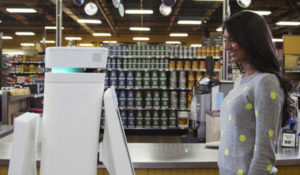
With an eye toward minimizing its carbon footprint, Wal-Mart Stores will partner with the Carbon Disclosure Project (CDP) to measure the amount of energy used to create products throughout its supply chain.
An initial pilot project will focus on seven commonly used product categories — DVDs, toothpaste, soap, milk, beer, vacuum cleaners and soda — and will examine the energy used during the procurement, manufacturing and distribution processes. It will be conducted in partnership with a group of Wal-Mart suppliers interested in finding new and innovative ways to make the entire process more energy-efficient, Wal-Mart said.
The retailer’s announcement is part of its Sustainability 360 approach to extend sustainability to products, suppliers, associates, communities and customers.
Key Starting Point
“This is an important first step toward reaching our goal of removing non-renewable energy from the products Wal-Mart sells,” said John Fleming, executive vice president and chief merchandising officer for the Wal-Mart Stores division. “This is an opportunity to spur innovation and efficiency throughout our supply chain that will not only help protect the environment but save people money at the same time.”
The CDP is an independent, nonprofit UK-based organization focused on the implications of climate change on commercial operations and shareholder value.
“The partnership between CDP and Wal-Mart is a significant milestone in corporate action to mitigate climate change,” said CDP Chief Executive Paul Dickinson. “By engaging its supply chain in the CDP process, Wal-Mart will encourage its suppliers to measure and manage their greenhouse gas emissions, and ultimately reduce the total carbon footprint of Wal-Mart’s indirect emissions. We look forward to other global corporations following Wal-Mart’s lead.”
The DVD Chain
News Corp.’s Twentieth Century Fox Home Entertainment, which is a Wal-Mart supplier for DVDs, initiated an analysis of the carbon impact of the production, manufacture and distribution of its DVDs throughout its supply chain, with participation from more than 20 of its own key suppliers, Wal-Mart said. That analysis led to an industry standard for measuring the carbon impact of DVDs and instructed the methodology for other consumer packaged goods.
“We are grateful to our suppliers for their input and participation. This is a learning process and the members of this group are pioneers addressing some of the biggest challenges in the world today,” said Jim Stanway, senior director of Wal-Mart’s global supply chain initiatives. “With the help of our suppliers, CDP and other partners, we can better understand the impact of energy and our supply chain.”
A Leadership Position
With as many as 61,000 suppliers and operations in 71 countries, Wal-Mart is in “the fortuitous position of being the world’s largest company,” Michael Bergdahl, author and former Wal-Mart executive, told CRM Buyer.
“What company has more potential to lead with its green efforts than Wal-Mart?” Bergdahl noted. “That’s really what Wal-Mart is attempting to do here — to take a leadership position.”
Indeed, the company has efforts under way across its supply chain, including initiatives focused on packaging and zero waste, solar energy, and the efficiency of its truck fleet, which is among the largest in the United States with about 7,000 trucks, Bergdahl added.
“They’re doing everything they can to improve mileage per gallon, such as not allowing their trucks to idle,” he said. “Even an improvement of just one mile per gallon leads to huge savings.”
Positive Press
Yet despite such efforts and its significant corporate charitable donations — it gave US$250 million to charities last year, Bergdahl said — Wal-Mart tends to get a lot of negative publicity, he added.
“This green effort is a major corporate focus at Wal-Mart, and it’s actually one of their driving strategies,” Bergdahl explained.
“What they’re trying to prove is that profitability and being environmentally friendly go hand-in-hand, and that green efforts can also improve goodwill,” he said. “In addition to the other good reasons for their effort, it also gives them high visibility in an area that creates positive press.”
Wal-Mart’s efforts will also start to bring the United States in line with supply-chain efforts already under way in Europe, R. Neal Elliott, industrial program director for the American Council for an Energy-Efficient Economy, told CRM Buyer.
“This is a really important issue because more than 80 percent of the energy and the carbon put into a product are put there in the supply chain,” Elliott explained. “So if you want to target the embedded carbon footprint of the product up to the point of sale, mostly you need to look back-channel. That’s what makes initiatives like Wal-Mart’s so important.”
Just the Beginning
Wal-Mart has taken many valuable steps towards reducing its carbon footprint, but it needs to go further and make those efforts part of its broader standard operating procedure, Bill Magavern, senior representative for Sierra Club California, told CRM Buyer.
“I think this is a good first step, but I hope they’ll follow through and actually take the steps they know can reduce emissions both at their stores and across their operations and suppliers,” Magavern said.
The company has built some energy-efficient stores, for example, “but only a handful,” Magavern said. Meanwhile, it continues to build more of its traditional, “energy-guzzling ones,” he said. “We’d like to see them implement their best practices everywhere.”





















































